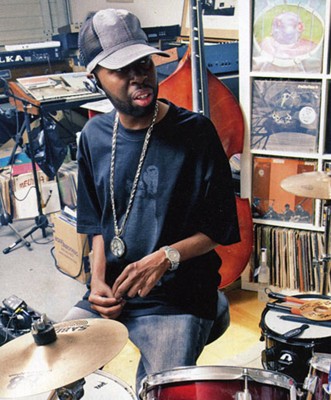
What will our legacy be? What will we leave behind?
The revered and deceased musician J Dilla or Jay Dee, born James Yancey, continues to build on his legacy even after his death in 2006. The revived PayJay records blew the dust off of J Dilla’s previously unreleased solo album and delivered “The Diary” on Friday.
The Detroit-based rapper and producer was known to his fans as an influential hip-hop artist who worked with, inspired and befriended Busta Rhymes, Janet Jackson and De La Soul, to name a few.
Dilla was in the rap trio Slum Village that was formed out of his high school friends in 1996 and created classics like “Fall In Love.” This song made an impact in the music community and was heavily remixed by jazz-inspired musicians like Flying Lotus and Robert Glasper. In its heyday, Slum Village defined a mix of jazz and hip-hop that was iconic Dilla.
Slum Village displayed Dilla’s virtuosity on the song “Players.” The word “player” is manipulated from what is actually being sung — the name “Clair.” Knowing this changes the entire listening experience and the possibilities of what can be done with language or sound burst open. If that thought process isn’t true artistry, then I don’t know what is.
J Dilla was known for his honesty, kindness and sincerity, which is a rarity in his field. He was also known as a visionary producer — the “king of beats” — whose peers viewed him as Christ-like.
Mass Appeal Records originally shelved “The Diary,” but its second coming shows us the deliberation of a hip-hop master.
It opens with “The Introduction.” The hook has Dilla rapping, “First let me introduce myself / My peeps call me Dilla / Known to write and produce myself.” Most hip-hop fans would need no introduction to Dilla or his music, but his persistence reinforces a concrete image.
The album was announced just after the 10th anniversary of Dilla’s death in 2006. He suffered from a blood disease and passed away at 32 only days after the release of his album “Donuts.”
The repetitive loops of “Donuts” appear as bursts of sound. The album makes us consider time and the idea of prolonging or running out of it. The dedication to his craft is palpable, as Dilla was there for his music in sickness and in health.
“The Sickness” is a song from “The Diary” that features rap legend Nas — the hip-hop equivalent of pairing Mozart and Beethoven on a beat. The song is classic hip-hop and full of bravado, as J Dilla and Nas puff out their chests. As Nas tells us, “This ain’t just rap, this facts.”
So why does J Dilla only have a cult following if his music was so influential? Producers like Timbaland have their names splashed over the industry, but Dilla was known for picking quality over quantity. He created classic songs, which gave him credibility with musicians instead of the general public.
“Gangsta Boogie,” another track from “The Diary,” is a funk-fueled jam with bounce, which fits perfectly with featured artist Snoop Dogg. Also on the track is Kokane, an alum of Eazy E’s Ruthless Records and former co-writer for N.W.A. This song has the strongest imprint of Dilla’s “magic,” as it shows the producer at his grooviest.
Though probably not his best work, “The Diary” tells the tale of Dilla’s unheard gems from a lost album. This time capsule of a piece comes to us at a time when hip-hop is exceedingly relevant.
“The Diary” is a celebration of genius come and gone, and it timelessly pays homage to an artist whose time was cut short.














